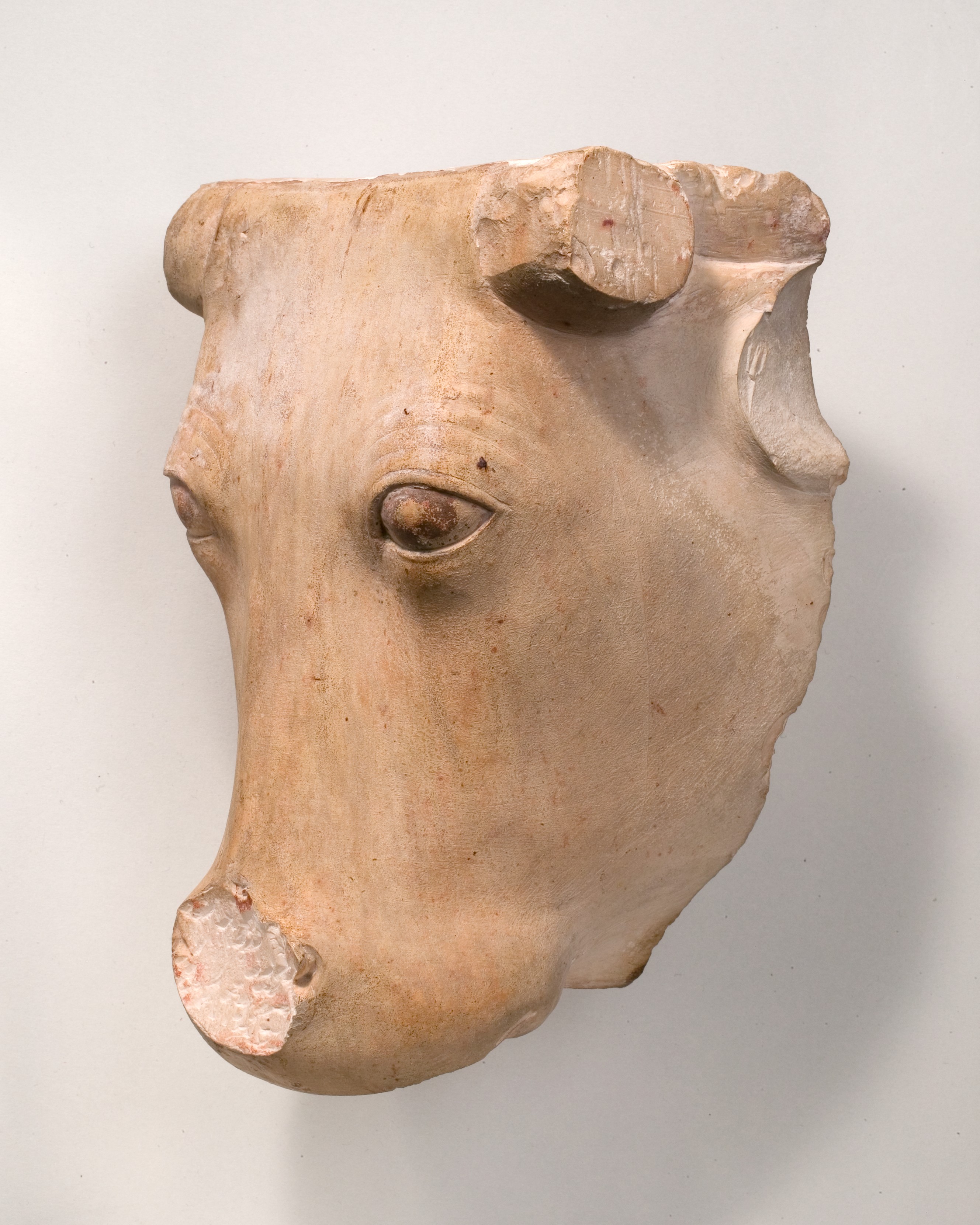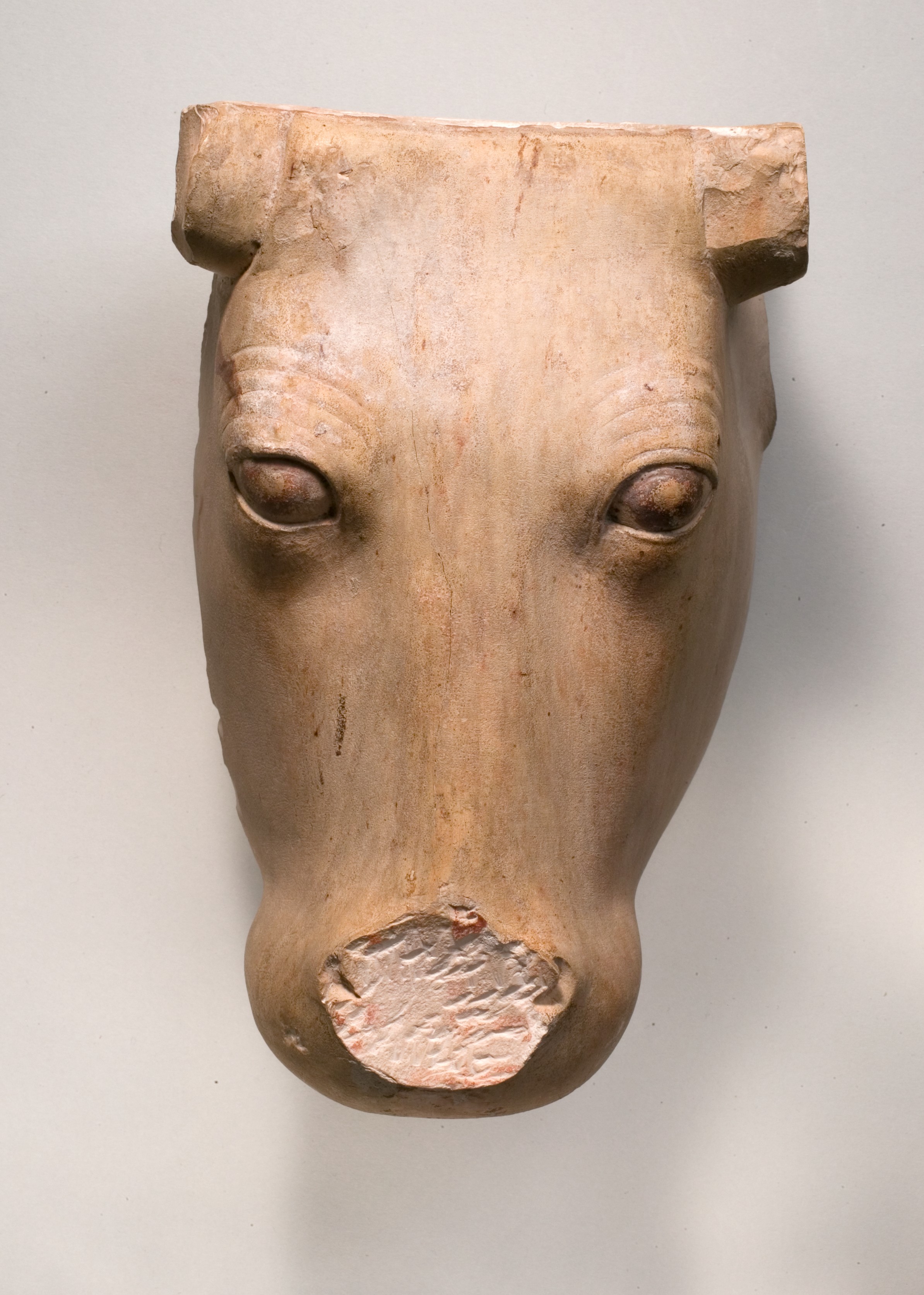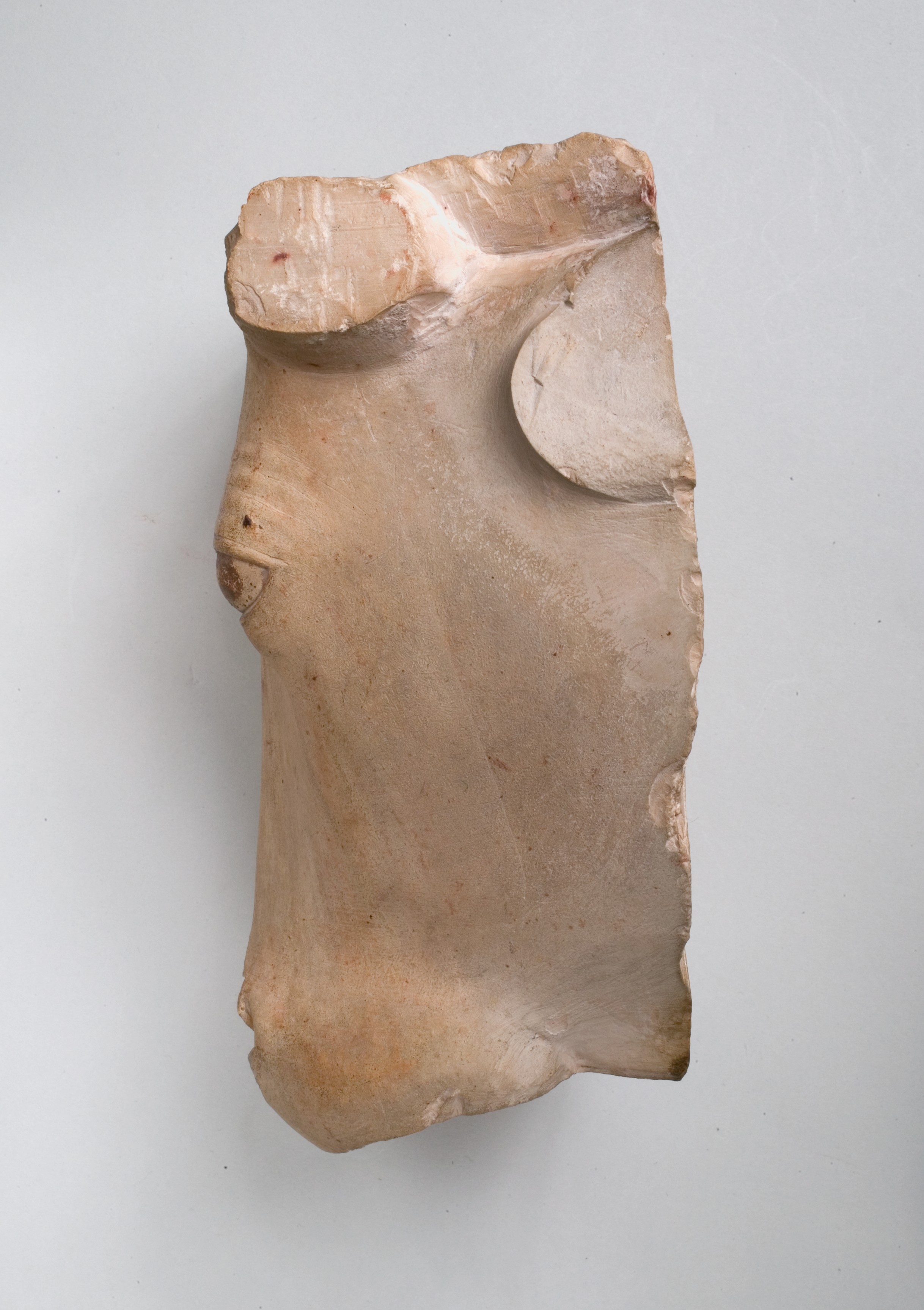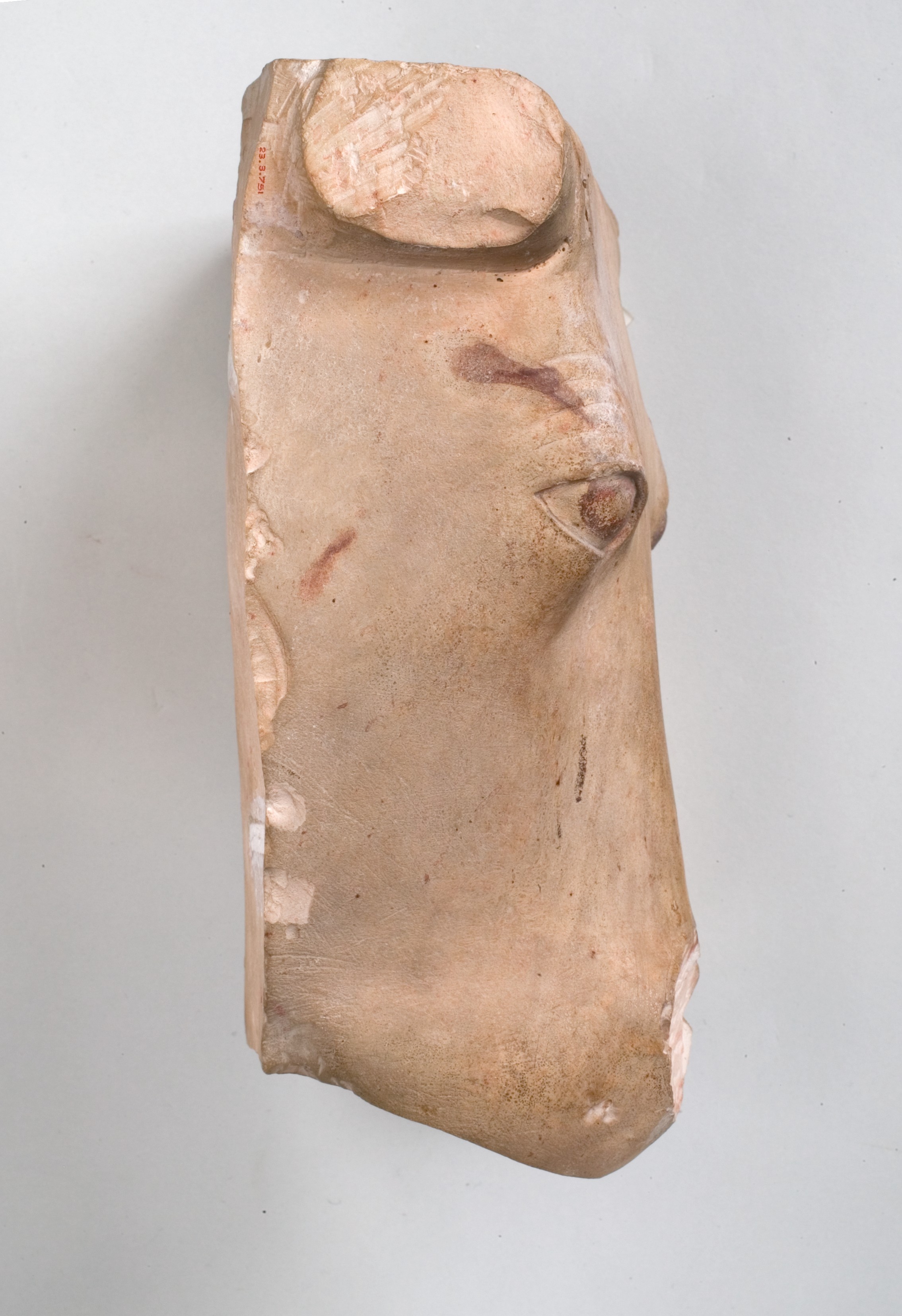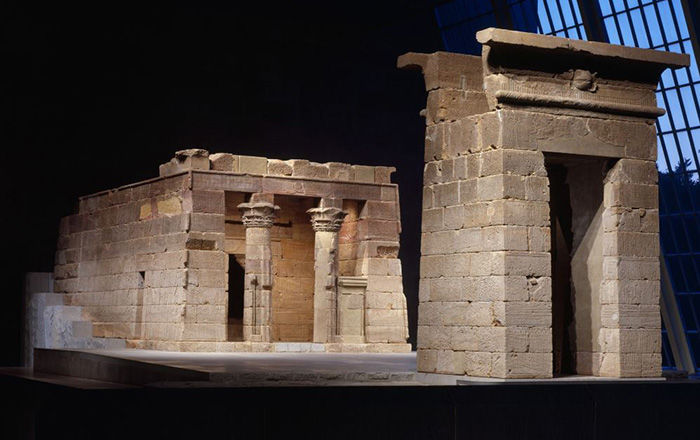Cow's Head from a frontal representation of a cow emerging from a wall
Late Period, Saite
Recent work at the tomb of Nespekashuty (see 23.3.468) has shown that this cow head, excavated by the Museum in the 1920s, stood over a statue of a wrapped figure. The cow was rendered as if emerging from the north wall false-door niche in the second room of the tomb and the wrapped figure, representing the tomb owner Nespekashuty, stood against its breast.
Cow statues protecting the king were associated with the worship of Hathor in the mountain at Deir el-Bahri in Thebes since the Middle Kingdom. In the Ramesside Period such statues of Hathor protecting the king were included in a few non-royal tombs at Saqqara, and by the late Ramesside Period an example is known that depicts the cow protecting a non-royal person. Hathoric imagery remained popular during the Third Intermediate Period, but decorated tombs only resumed with the Kushite-Saite Period. With that, cow statues appeared again in the south and north, probably incorporating notions of the divine cow as escort to the afterworld, and Nespekashuty's tomb at Thebes was one of the early instances. His employ of the type seems to have been part of recreating a condensed layout of the nearby temple of Hatshepsut of Deir el Bahri, according to the most recent analysis.
This image cannot be enlarged, viewed at full screen, or downloaded.
This artwork is meant to be viewed from right to left. Scroll left to view more.


